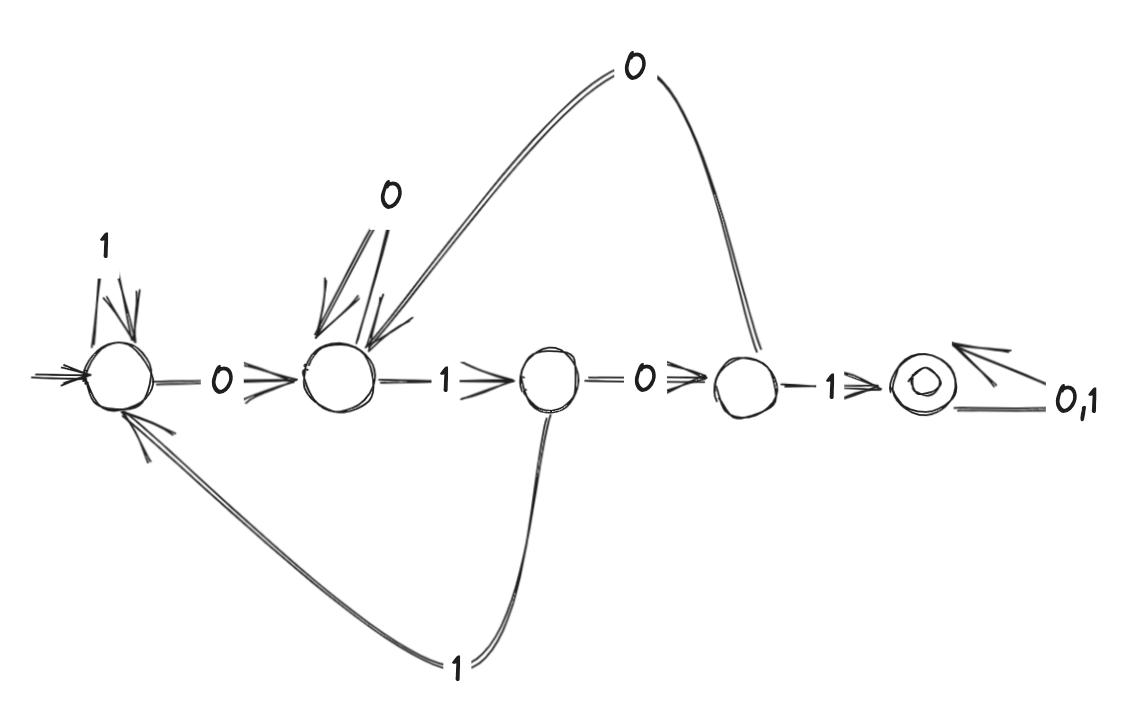1 - DFA
ucla | CS 181 | 2024-04-01 15:06
Table of Contents
Basic Notions
- Alphabet - any finite, nonempty set of symbols; usually bits
- Strings - finite, possibly empty, sequence of symbols
- Empty string (
- Binary string - a string of the binary alphabet (bits)
- Language - a set, possibly infinite, of strings and a subset of all possible permutations and combinations of strings
- Empty lang (
- Nonempty lang of the empty string:
- Language of an automaton is the language for which the automaton accepts
- Empty lang (
- Computational Device - a mechanism that inputs a string and accepts or rejects
Interpreting DFAs
- DFAs - a computational mechanism that is defined by an alphabet, states (circle), initial state (circle with arrow to it with no other endpoint), and accept state (double circle), and transitions that are complete/deterministic for every possible input string
- Given a language, constructing a DFA entails defining a model using a 4-tuple with alphabet, states, initial state, final states, transitions
- can be defined as a table (column headers alphabet, row headers states, table values are the state that corresponds to the output of the alphabet (column) from the state(row) )
- thus,
- M recognizes L iff. M accepts all strings in L


